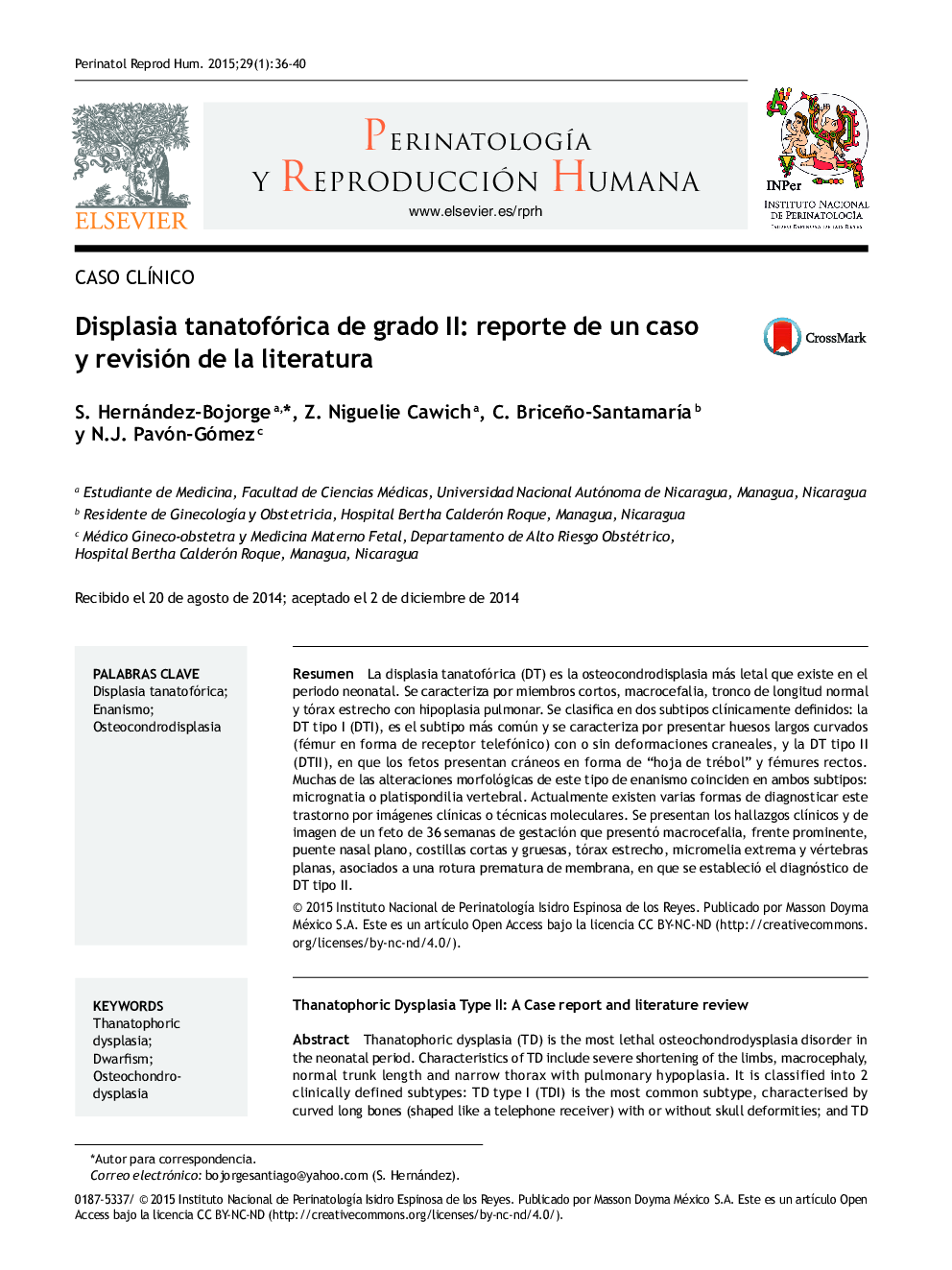| کد مقاله | کد نشریه | سال انتشار | مقاله انگلیسی | نسخه تمام متن |
|---|---|---|---|---|
| 4175735 | 1276214 | 2015 | 5 صفحه PDF | دانلود رایگان |
ResumenLa displasia tanatofórica (DT) es la osteocondrodisplasia más letal que existe en el periodo neonatal. Se caracteriza por miembros cortos, macrocefalia, tronco de longitud normal y tórax estrecho con hipoplasia pulmonar. Se clasifica en dos subtipos clínicamente definidos: la DT tipo I (DTI), es el subtipo más común y se caracteriza por presentar huesos largos curvados (fémur en forma de receptor telefónico) con o sin deformaciones craneales, y la DT tipo II (DTII), en que los fetos presentan cráneos en forma de “hoja de trébol” y fémures rectos. Muchas de las alteraciones morfológicas de este tipo de enanismo coinciden en ambos subtipos: micrognatia o platispondilia vertebral. Actualmente existen varias formas de diagnosticar este trastorno por imágenes clínicas o técnicas moleculares. Se presentan los hallazgos clínicos y de imagen de un feto de 36 semanas de gestación que presentó macrocefalia, frente prominente, puente nasal plano, costillas cortas y gruesas, tórax estrecho, micromelia extrema y vértebras planas, asociados a una rotura prematura de membrana, en que se estableció el diagnóstico de DT tipo II.
Thanatophoric dysplasia (TD) is the most lethal osteochondrodysplasia disorder in the neonatal period. Characteristics of TD include severe shortening of the limbs, macrocephaly, normal trunk length and narrow thorax with pulmonary hypoplasia. It is classified into 2 clinically defined subtypes: TD type I (TDI) is the most common subtype, characterised by curved long bones (shaped like a telephone receiver) with or without skull deformities; and TD type II, in which the foetus has a cloverleaf-shaped skull and straight femurs. In this type of dwarfism most of the morphological alterations, like micrognathia and platyspondyly of the vertebrae, coincide in both types. Currently, the diagnosis of this disorder can be performed by clinical imaging and molecular techniques. The case report shares the clinical and sonographic findings of a 36-week-old foetus that presented macrocephaly, low nasal bridge, short ribs, narrow thorax, marked shortening of the limbs (micromelia) and platyspondyly of the vertebrae, associated with premature membrane rupture. A diagnosis of TD type II was established.
Journal: Perinatología y Reproducción Humana - Volume 29, Issue 1, January–March 2015, Pages 36–40
